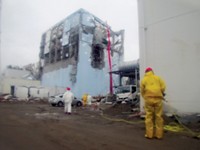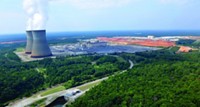Advertisement
Grab your lab coat. Let's get started
Welcome!
Welcome!
Create an account below to get 6 C&EN articles per month, receive newsletters and more - all free.
It seems this is your first time logging in online. Please enter the following information to continue.
As an ACS member you automatically get access to this site. All we need is few more details to create your reading experience.
Not you? Sign in with a different account.
Not you? Sign in with a different account.
ERROR 1
ERROR 1
ERROR 2
ERROR 2
ERROR 2
ERROR 2
ERROR 2
Password and Confirm password must match.
If you have an ACS member number, please enter it here so we can link this account to your membership. (optional)
ERROR 2
ACS values your privacy. By submitting your information, you are gaining access to C&EN and subscribing to our weekly newsletter. We use the information you provide to make your reading experience better, and we will never sell your data to third party members.
Energy
Japan To Develop Renewable Energy
Nuclear Crisis: Nation will scrap plan to obtain half of its electricity from atomic power
by Glenn Hess
May 23, 2011
| A version of this story appeared in
Volume 89, Issue 21
Renewable energy will play a larger role in Japan, government officials say. The energy policy shift comes in the wake of the earthquake and tsunami that led to the crisis at the Fukushima Daiichi nuclear power plant.
“The current basic energy policy envisages that over 50% of total electricity supply will come from nuclear power while 20% will come from renewable power in 2030,” Prime Minister Naoto Kan said at a May 10 news conference in Tokyo. “But that basic plan needs to be reviewed now from scratch after this big incident.”
Japan’s 54 nuclear reactors provide slightly less than 30% of the country’s electricity. The country had planned to build at least 14 additional reactors over the next 20 years, but policymakers acknowledge that is no longer practical in light of the Fukushima crisis.
Japan will maintain nuclear power and fossil fuels as energy sources, but the government will promote renewable energy, according to the prime minister. “Natural and renewable energy needs to be developed and commercially promoted at an accelerated pace. This is what Japan needs and what I plan to pursue,” Kan said.
Renewable energy sources such as wind turbines, solar power, and biomass currently provide only about 1% of the country’s electricity.
“Various studies have shown that Japan is blessed with an abundance of wind and other renewable resources which can be used to rebuild and strengthen our country,” says Chuichi Arakawa, vice president of the Bonn, Germany-based World Wind Energy Association.
The Fukushima complex was badly damaged by a massive earthquake and tsunami on March 11 (see page 13). Reactors’ cooling systems were knocked out, causing fuel rods to overheat. Subsequently, explosions and fires razed the buildings that house four reactors, three of which had been operating at the time of the earthquake.
Tokyo Electric Power, which operates the plant, said last week that it still aims to end the release of radioactive materials and bring the Fukushima facility to a stable cold shutdown by January 2012 as announced in the original April action plan (C&EN, April 25, page 7).





Join the conversation
Contact the reporter
Submit a Letter to the Editor for publication
Engage with us on Twitter